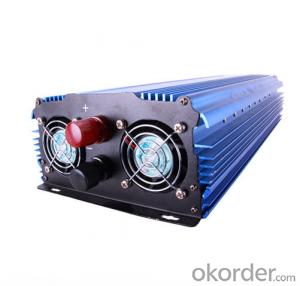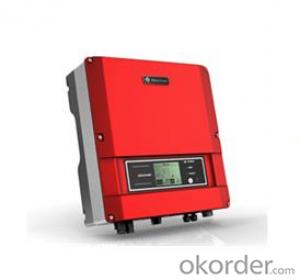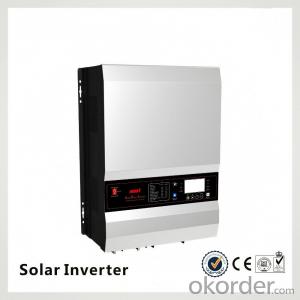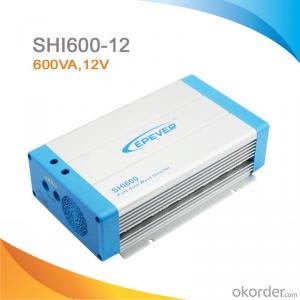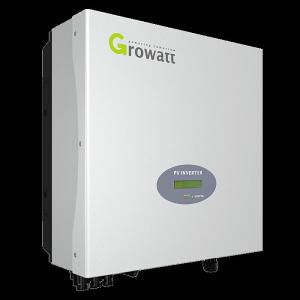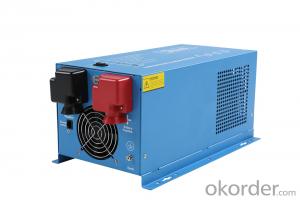Car Solar Inverter TY-HI2000 High Efficiency 2000 Watt 220V Inverter
- Loading Port:
- Qingdao
- Payment Terms:
- TT OR LC
- Min Order Qty:
- 50000 watt
- Supply Capability:
- 3000000 watt/month
OKorder Service Pledge
OKorder Financial Service
You Might Also Like
1. Structure of Solar Inverter TY-HI2000 High Efficiency 2000 Watt 220V Inverter Description
A solar inverter, or PV inverter, or Solar converter, converts the variable direct current (DC) output of a photovoltaic (PV) solar panel into a utility frequency alternating current (AC) that can be fed into a commercial electrical grid or used by a local, off-grid electrical network. It is a critical BOS–component in a photovoltaic system, allowing the use of ordinary AC-powered equipment. Solar inverters have special functions adapted for use with photovoltaic arrays, including maximum power point tracking and anti-islanding protection.
2. Main Features of the Solar Inverter TY-HI2000 High Efficiency 2000 Watt 220V Inverter
﹒Soft-start function, increase loading capacity.
﹒Aluminum alloy shell, with battery clip and manual.
﹒High-end chip, high-performance CPU, improve the working reliability.
﹒Sound &light and under-voltage alarm, with frequency-conversion cooling fan.
﹒Over voltage, low voltage, over temperature, overload, short circuit, reverse connection protection.
3. Solar Inverter TY-HI2000 High Efficiency 2000 Watt 220V Inverter Images
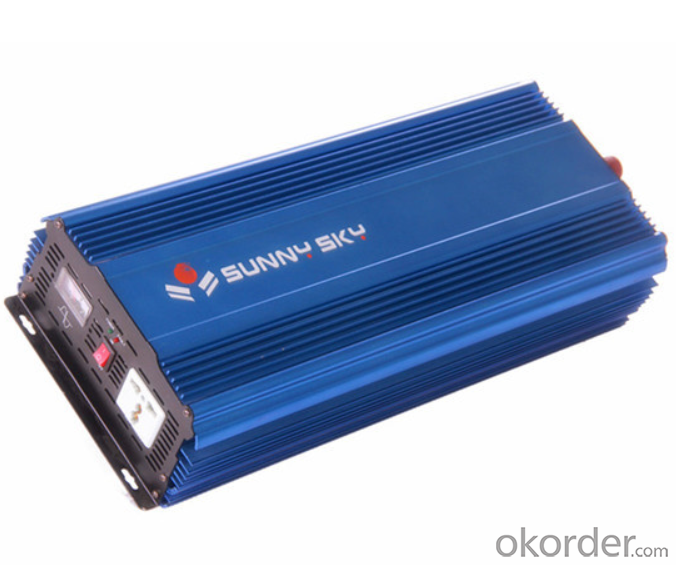
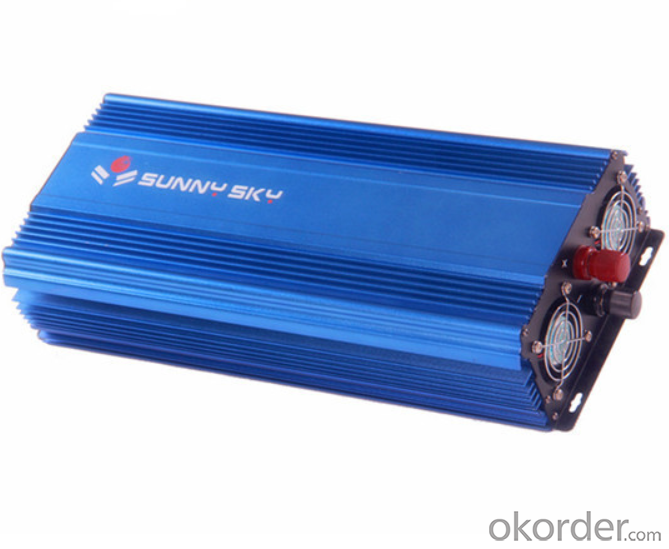

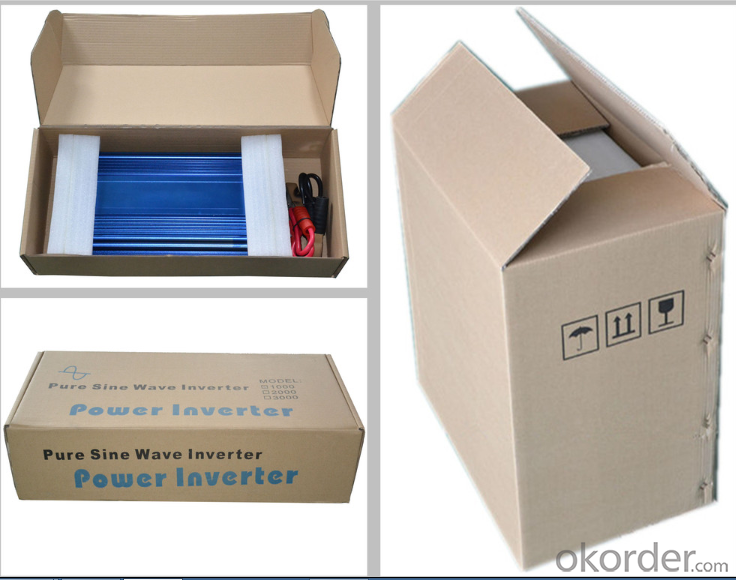
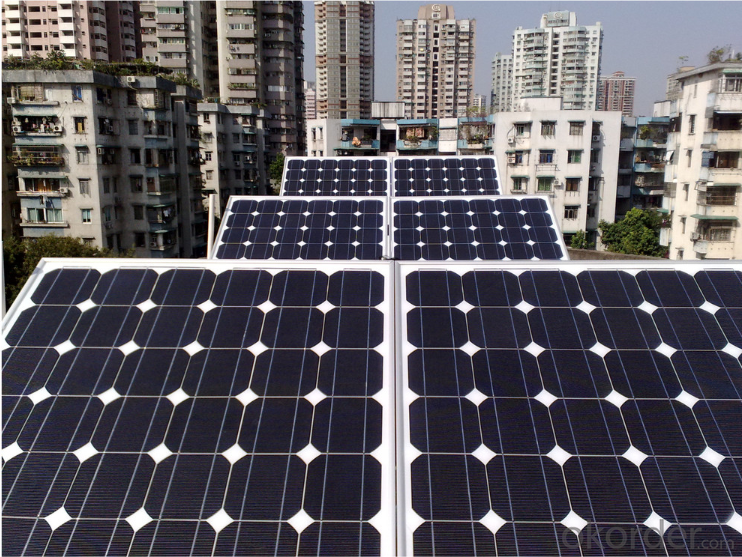
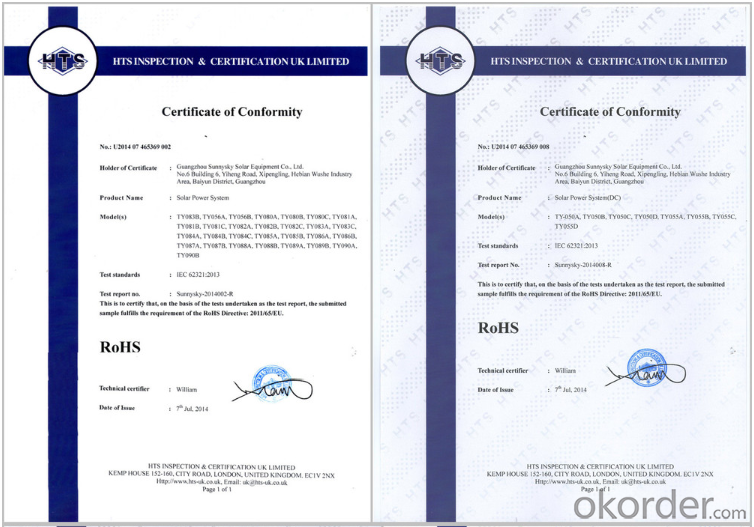
4. Solar Inverter TY-HI2000 High Efficiency 2000 Watt 220V Inverter Specification
ITEM NO | TY-HI2000W | |
OUTPUT | Output Volt | 100/110/220/230/240VAC |
Continuous Power | 2000W | |
Surge Power | 4000W | |
Waveform | Pure Sine Wave | |
Frequency | 50Hz/60Hz | |
Output Voltage | Low & High 10% | |
No Load Curent Draw | ≤1.6A | |
Frequency | >93% | |
INPUT | DC Input Voltage | 12VDC |
DC Operating Voltage | 11-15V | |
PROTECTION | Working Temperature | Between -10°C and +50°C |
DC Low-voltage Protection | 9-10.5V | |
DC Low-voltage Alarm | 9.5-11V | |
Overload Protection | 2000-2400W | |
DC Over-voltage Protection | ≥15V | |
Fuse | 35A*3 | |
Temperature Protection | +60°C--+70°C | |
Short-circuit Protection | Yes | |
Green Led Indicator | Green Light(Working),Flash(Overload Protection) | |
Red LED Indicator | Red Light(Error Protection) | |
5. FAQ of Solar Inverter TY-HI2000 High Efficiency 2000 Watt 220V Inverter
Q1. What is A Power Inverter?
A power inverter, or inverter, is an electrical power converter that changes direct current (DC) to alternating.current (AC); the converted AC can be at any required voltage and frequency.
Q2. What's The Difference Between 12, 24, And 48 Volt Inverters?
This refers to the input voltage from the battery bank. The main consideration is that at higher voltages the current is less so that you can use smaller wires between your solar panel array and your battery bank.
Q3. What's The Difference Between A Pure Sine Wave Inverter And A Modified Sine Wave Inverter?
A pure sine wave inverter produces a nearly perfect sine wave output (less than 3% total harmonic distortion) that is essentially the same as utility supplied grid power. Thus it is compatible with all AC electronic devices. A modified sine wave inverter is not as close, but is still quite satisfactory in most cases.
Q4. How do we equip an appropriate inverter for battery?
Take a battery with 12V/50AH as an example. Power equal current plus voltage then we know the power of battery is 600W. 12V*50A=600W. So we can choose a 600W power inverter according this theoretical value.
- Q: What is the role of anti-islanding protection in a solar inverter?
- The role of anti-islanding protection in a solar inverter is to ensure the safety of utility workers and prevent damage to the electrical grid in the event of a power outage. It detects when the grid goes down and immediately shuts off the solar inverter, preventing it from continuing to generate electricity and potentially sending power back into the grid. This feature is essential to avoid the risk of electricity flowing into the grid, which could pose a danger to technicians working on power lines and disrupt the stability of the electrical system.
- Q: Are there any government regulations or certifications for solar inverters?
- Yes, there are government regulations and certifications for solar inverters. In many countries, solar inverters must comply with specific standards and regulations set by government bodies. Additionally, various certifications such as International Electrotechnical Commission (IEC) standards, UL listing, and CE marking are commonly required to ensure the safety, performance, and interoperability of solar inverters.
- Q: What is the role of a surge protector in a solar inverter?
- The role of a surge protector in a solar inverter is to protect the sensitive electronic components of the inverter from power surges or voltage spikes that may occur in the electrical grid. By diverting excess voltage away from the inverter, it helps to prevent damage and ensure the reliable operation of the solar system.
- Q: How is the efficiency of a solar inverter measured?
- The efficiency of a solar inverter is typically measured by calculating the ratio of the output power to the input power. This is done by dividing the AC power output by the DC power input, and then multiplying the result by 100 to obtain a percentage value.
- Q: How does MPPT improve the performance of a solar inverter?
- MPPT (Maximum Power Point Tracking) is a technique used in solar inverters to enhance their performance and maximize the energy output of the solar panels. Solar panels generate direct current (DC) electricity, which needs to be converted into alternating current (AC) to be used by household appliances or fed back to the grid. However, the amount of power generated by solar panels varies depending on factors like sunlight intensity, temperature, shading, and panel orientation. MPPT algorithms enable solar inverters to continuously track and adjust the operating point of the solar panels to extract the maximum power available. By continuously monitoring the voltage and current output of the solar panels, the MPPT controller determines the optimal operating voltage and current that will yield the highest power output. This optimization process is crucial because solar panels have a specific voltage and current combination at which their power output is maximized, known as the maximum power point (MPP). By operating the solar panels at their MPP, MPPT significantly improves the overall efficiency and performance of the solar inverter. With MPPT, solar inverters can adapt to changing environmental conditions and extract the maximum available power from the solar panels. This allows for increased energy production, reducing the reliance on grid electricity and maximizing the return on investment in solar installations. In summary, MPPT improves the performance of a solar inverter by optimizing the operating point of the solar panels to extract the maximum power available. This leads to increased energy production, improved efficiency, and better utilization of solar energy resources.
- Q: What is the role of transformerless design in a solar inverter?
- The role of transformerless design in a solar inverter is to eliminate the use of a bulky and costly transformer, which helps reduce the overall size, weight, and cost of the inverter. Additionally, a transformerless design allows for higher efficiency and improved performance of the solar inverter.
- Q: What are the common troubleshooting steps for a malfunctioning solar inverter?
- The common troubleshooting steps for a malfunctioning solar inverter include checking the display for error messages, inspecting the DC and AC connections for loose or damaged wires, verifying the input voltage and frequency, resetting the inverter, and monitoring the system for any unusual behavior. If these steps do not resolve the issue, it is advisable to consult a professional or contact the manufacturer for further assistance.
- Q: Are there any fire safety concerns associated with solar inverters?
- Yes, there are some fire safety concerns associated with solar inverters. While solar inverters are generally safe and undergo rigorous testing to meet safety standards, there have been rare instances of fires caused by faulty inverters or improper installation. It is crucial to ensure that inverters are installed by qualified professionals following manufacturer guidelines and regularly inspected for any signs of damage or malfunction. Additionally, proper maintenance and monitoring of the inverter system can help mitigate any potential fire risks.
- Q: Can a solar inverter be used in regions with high levels of dust or debris?
- Yes, a solar inverter can be used in regions with high levels of dust or debris. However, it is important to regularly clean and maintain the inverter to prevent any potential issues caused by the accumulation of dust or debris, which could affect its efficiency and performance.
- Q: How does a solar inverter affect the overall system reliability?
- A solar inverter plays a crucial role in the overall system reliability of a solar power system. It converts the direct current (DC) generated by solar panels into alternating current (AC) that can be used to power homes or be fed back into the grid. By ensuring efficient and reliable conversion, a solar inverter helps optimize the system's performance and stability. It also incorporates various protection features like over-voltage and over-current protection to safeguard the system from potential damage. Therefore, a high-quality and well-maintained solar inverter positively impacts the overall reliability of the solar power system.
Send your message to us
Car Solar Inverter TY-HI2000 High Efficiency 2000 Watt 220V Inverter
- Loading Port:
- Qingdao
- Payment Terms:
- TT OR LC
- Min Order Qty:
- 50000 watt
- Supply Capability:
- 3000000 watt/month
OKorder Service Pledge
OKorder Financial Service
Similar products
Hot products
Hot Searches
Related keywords
